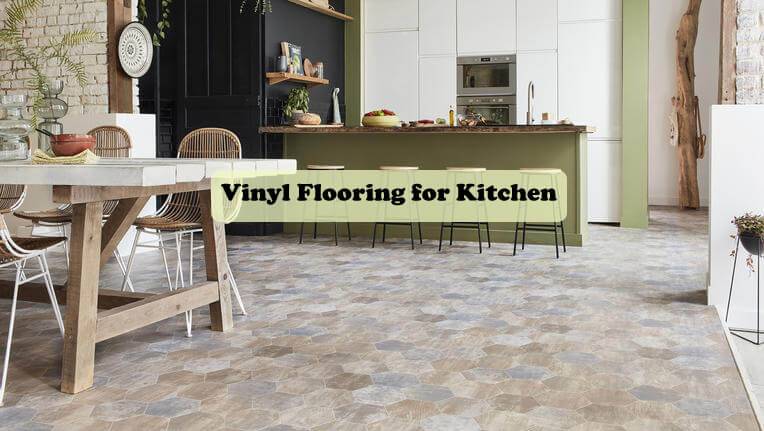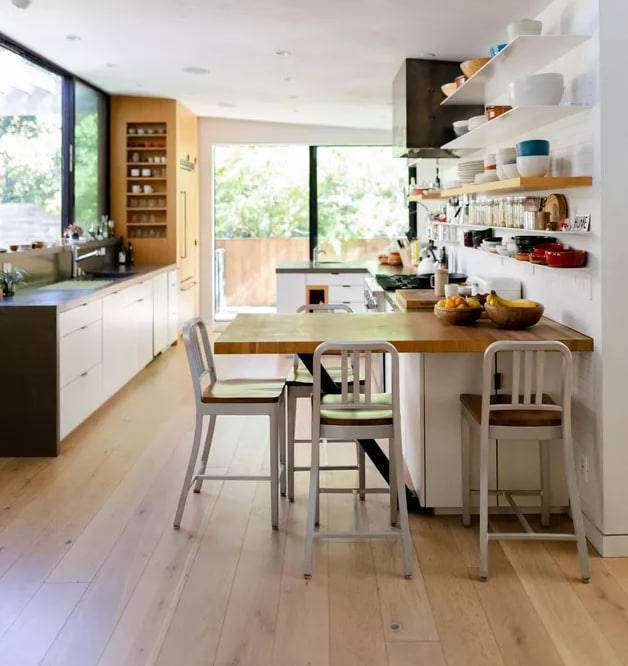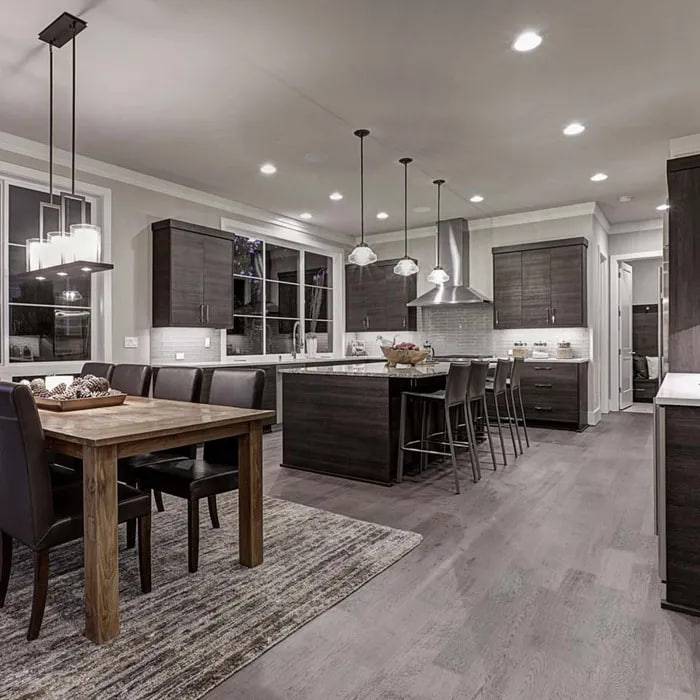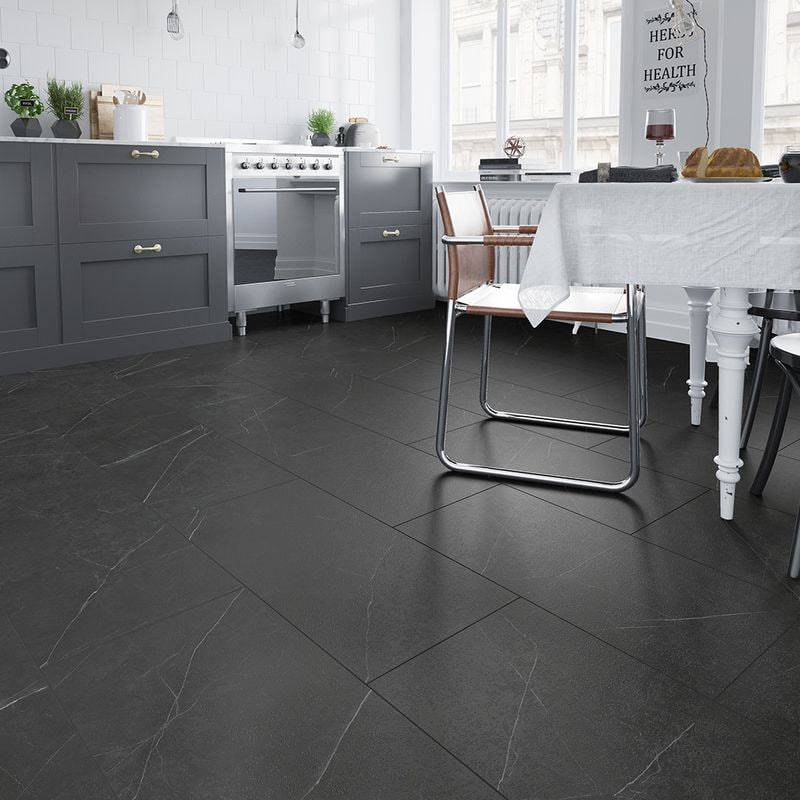Considering a kitchen renovation? Vinyl flooring might be the frontrunner for your must-have list. It’s popular for a reason: durable, water-resistant, budget-friendly, and easy to install. In addition, Vinyl Flooring for Kitchen is available in a vast array of trendy styles!
However, before you completely set your heart on vinyl, let’s explore its downsides. While vinyl offers practical benefits, its environmental impact can’t be ignored. These floors aren’t natural materials, and disposal often means landfills. Burning them releases harmful toxins.
Off-gassing of chemicals is another potential concern, though advancements have been made. To ensure environmental standards are met, look for certifications like FloorScore on the packaging.
Ready to explore the perfect vinyl flooring solution for your dream kitchen? Visit Dex Flooring today! Our expert staff can help you navigate the latest trends and find the ideal vinyl option for your style and needs.
Browse our extensive selection online or visit our showroom to experience the vinyl difference firsthand.
Dex Flooring: Where beautiful kitchens begin.
Types of Vinyl Flooring for Kitchen
Vinyl flooring is a dominant force in the resilient flooring category, alongside linoleum, cork, and rubber. Since its rise in the 1960s, vinyl has become a popular choice, particularly for kitchens, bathrooms, and basements.
The classic option is sheet vinyl, sold by the foot in wide rolls (often 12 feet). But vinyl has diversified!
- Vinyl tiles: Traditionally 12×12 inches, these come in adhesive and self-adhesive (“sticky-back”) options. Self-adhesive tiles are perfect for DIY beginners, simply peel and stick!
- Homogeneous vinyl tiles: These mimic linoleum with a single, solid layer of vinyl.
- Luxury vinyl planks (LVP) and tiles (LVT): These newer options offer realistic wood or stone looks with increased durability.
- Composite and self-adhesive tiles in new sizes: The market continues to expand with a wider variety of sizes and installation methods.
Sheet Vinyl: The Seamless Kitchen Contender
Sheet vinyl shines in kitchens thanks to its seamless design and easy maintenance. For most kitchens under 12 feet wide, a single sheet provides a watertight barrier – perfect for those inevitable spills.
Installation can be trickier than vinyl tiles for DIY enthusiasts. While some thicker sheet vinyl can be secured with edge glue alone, full bonding to the underlayment is recommended for kitchens. This requires careful adhesive selection (check with the manufacturer!) to avoid incompatibility with the backing material.
While big box stores might offer limited, dated patterns, flooring distributors or special orders open a world of possibilities! Designs range from modern to classic, and some even utilize textured surfaces or glossy finishes to mimic the look and feel of wood or stone floors.
Sheet Vinyl Quality
Sheet vinyl might seem simple, but it’s actually a layered product with varying qualities.
The real hero for durability is the wear layer, a thin film on top that takes the brunt of daily wear and tear. This layer’s thickness, typically ranging from 6 to 20 millimeters (with common options at 10, 12, and 15 millimeters), is what truly matters.
Here’s the good news: a thicker wear layer translates to a longer lifespan! It provides better resistance to scuffs, scratches, and even cuts, protecting the design layer beneath. So, when choosing sheet vinyl, focus on the wear layer thickness for a floor that looks great and lasts.
Old-Style Vinyl Tile
Remember the limited selection of 12×12 inch vinyl tiles? Thankfully, vinyl tile has come a long way! While the classic “peel-and-stick” self-adhesive tiles are still around (and budget-friendly!), you now have a wider range of options to explore.
- Self-adhesive tiles: Perfect for renters or quick DIY projects, these remain an easy and affordable solution. They come in updated patterns and even larger 18×18 inch sizes. While economical, keep in mind proper installation is crucial to avoid gaps and misalignment.
- Checkerboard patterns or low-traffic areas like pantries might be ideal for self-adhesive tiles, but for kitchens, consider their limitations. Longevity and water resistance might be a concern.
- Homogeneous vinyl tiles: Looking for a retro vibe? These solid vinyl tiles mimic linoleum and are commonly used in commercial settings. They require professional installation with a bonded underlayment and regular maintenance (waxing) to maintain shine and prevent scratches.
Luxury Vinyl Flooring for Your Kitchen Style
Luxury Vinyl Flooring (LVF) is the new star in the vinyl world. Available in planks (LVP) and tiles (LVT), it offers a world of design possibilities for your kitchen.
Flooring for the Discerning Homeowner:
LVF goes beyond basic vinyl. High-quality options are incredibly realistic and durable, mimicking the look and texture of hardwood (both classic and exotic varieties) or even rustic barn wood. Stone and masonry surfaces are also popular LVT choices.
Luxury on a Spectrum:
While “luxury” is in the name, LVF quality varies. High-end options are impressive and can truly elevate your kitchen design. Look for features like beveled, painted edges on LVPs or LVTs. These details enhance realism and make installation a bit more forgiving compared to straight-edged products.
Luxury Vinyl Planks for Perfect Kitchen
Luxury Vinyl Planks (LVP) offer a beautiful wood look for your kitchen, but with a key advantage: complete waterproofness. Unlike real wood, LVP won’t buckle or warp with spills, a major benefit in high-moisture areas. Additionally, the slight give in LVP provides comfort underfoot, ideal for long stretches of cooking.
However, LVP has its limitations. Seams can be vulnerable, especially in high-traffic kitchens with frequent wet mopping. So, for the busiest kitchens, plank flooring of any kind might not be the most durable long-term choice.
LVP Variations:
- Size: LVP comes in a range of plank widths (typically 4-8 inches) and lengths (3 or 6 feet).
- Thickness: Budget-friendly LVP can be quite thin (2mm) and flexible, often with self-adhesive backing. Higher-quality options are thicker (6-8mm) with wear layers up to 20mm for increased durability.
- Installation: Many high-end LVPs feature click-together edges, allowing for a floating installation over an underlayment, similar to laminate flooring.
Luxury Vinyl Tile: Stone Style for Your Kitchen
Luxury Vinyl Tile (LVT) brings the beauty of stone (marble, granite, concrete) to your kitchen with the undeniable advantage of waterproof durability.
However, seams can be a weak spot, especially compared to LVP. Here’s how to address that:
- Embrace the Gaps: Install LVT tiles with 1/8″ to 1/4″ space between them. Fill these gaps with a special “grout” designed for LVT (usually sold nearby).
- Seamless Sophistication: For a classic, formal look, choose LVT with straight edges. These tiles are designed to be installed flush against each other, creating an unbroken, polished appearance just like real stone tile.
Conclusion
Vinyl flooring offers a compelling combination of style, practicality, and affordability for your kitchen. From classic sheet vinyl to cutting-edge luxury vinyl planks and tiles, there’s a vinyl option to suit almost any design taste and budget. Consider the pros and cons of each type, and prioritize features like waterproofness, wear layer thickness, and ease of installation to find the perfect vinyl fit for your kitchen.
FAQs
Q: Are bold colors and patterns on-trend for vinyl flooring?
Absolutely! While classic wood and stone looks are timeless, don’t be afraid to explore vibrant colors and geometric patterns. Luxury vinyl planks and tiles offer a wide variety of options to add personality to your kitchen.
Q: What about textured vinyl flooring?
Textured vinyl tiles and planks are a hot trend, adding a touch of realism and dimension to your space. These options can mimic the look and feel of natural materials like wood or stone with the easy maintenance of vinyl.
Q: Are there sustainable vinyl flooring options?
While traditional vinyl isn’t inherently eco-friendly, there are advancements being made. Look for manufacturers who prioritize recycled content and low-VOC emissions for a more sustainable vinyl choice.
Q: Is DIY vinyl flooring installation possible?
Absolutely! Sheet vinyl and some self-adhesive vinyl tile options are great choices for DIY enthusiasts. Luxury vinyl planks and tiles with click-together mechanisms also offer a relatively user-friendly installation process. For complex installations or larger areas, consider consulting a professional flooring installer.
Sources:
https://www.flooringinc.com/blog/kitchen-flooring-trends/
https://informed.habitablefuture.org/product-guidance/1-flooring




